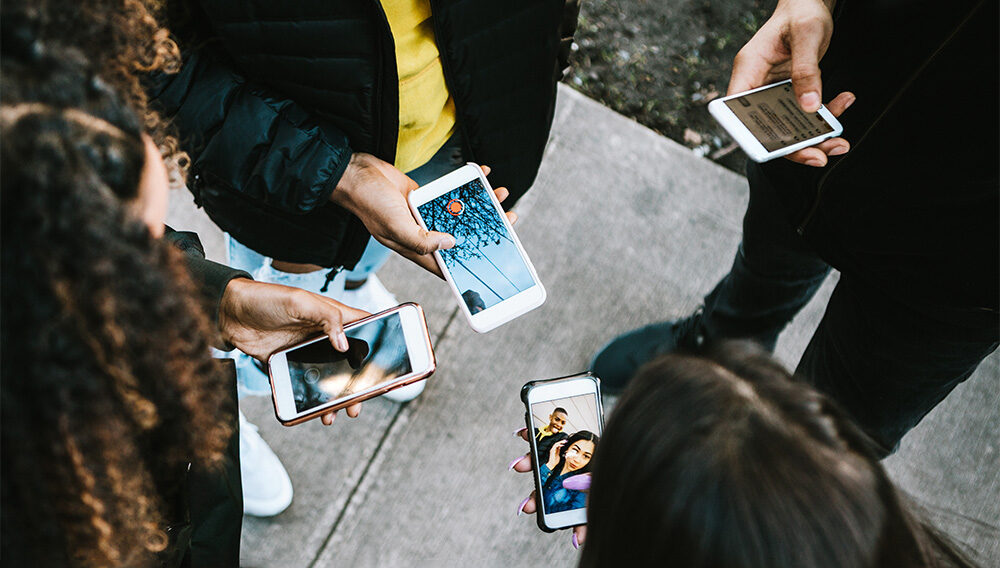Why the Nation Feels So Involved in the Death of Gabby Petito

Every day in the United States, there are countless victims of domestic violence, whether it’s physical or emotional abuse. Generally, these stories are not the headlines in the news. So why were so many people captivated by the Gabby Petito case?
According to an Insider.com article, in the past 10 years alone, 710 indigenous peoples—mostly girls—have gone missing in the same area that Petito did. In the week she was killed, two other women were killed at a campsite not far from her in Grand Teton National Park. There are many factors that may account for the attention the Petito case is receiving over others, including the 10 bodies found as a result of the investigative efforts of her case. As a social media strategist, I am exploring the link that social media plays in building an emotional connection between Petito and the public.
Many young adults take cross-country backpacking trips, but before the rise of social media, it wasn’t something others could follow in real-time. Petito had a dream to be a travel blogger and a social media influencer. She had an Instagram account with almost 1 million followers and a YouTube channel that was created to show her life and travels with 68,000 subscribers. She created a unique hashtag, #vanlife, and chronicled her journey in detail. Her boyfriend, Brian Laundrie, also revamped his accounts to show a different perspective on their life together and their trip. To the outside world who followed their social media channels, they were a young, happy couple.
Social media is now giving us even more access to their lives through the release of police body camera footage and individual’s accounts of interactions with them. In many instances, the third-party takes from social media create doubt and tell a very different story than what Petito and Laundrie portrayed on their own digital presence. After it was reported that Petito was missing, a few people took to TikTok to tell their stories of what they may have seen or the interactions that they had with both Petito and Laundrie. These people also reported sightings to authorities, but their posts made for even more fodder in the social media world as updates and conspiracy theories started swirling. As of the time Petito’s body was discovered on September 19, 2021, video content on TikTok with the hashtag #gabbypetito had more than 663.5 million views.
This type of highly emotional content can turn viral quickly, and with that, it creates a following and a community of engaged followers and contributors. Communal efforts and online conversations further spur interest and engagement. Much of this content can be deemed clickbait, a piece of content attractive enough to get viewers to click to view. It amounts to social media rubbernecking. In the same way you can’t look away when you see an accident on the side of the road, social media has made it easy to closely examine details and stories and make even casual followers feel like a detective or lawyer examining evidence and testimony.
The line between in-person relationships and those formed and existing solely online is becoming increasingly blurry. The online relationships may also be one-sided, where the viewer becomes attached to and invested in a media personality who doesn’t return the emotion. This phenomenon is called parasocial relationships.
Social media has facilitated the growth of parasocial relationships, a term coined by sociologists Donald Horton and R. Richard Wohl in 1956. In the times of COVID-19, with so many in isolation and following social distancing guidelines, the number and depth of parasocial relationships has only increased. Individuals who are taking to publicizing the Petito case via their personal social media accounts or waiting for additional updates have become somewhat of a movement for advocacy to the general public. These individuals may feel as though they are “helping” and working together for a greater good, which creates a deeper perceived psychological bond with the influencer.
This is not unlike cases we’ve seen for years, where the general public becomes seemingly obsessed with finding the answers, think of Jon Benet Ramsey or Elizabeth Smart. In many cases, the increased public awareness can lead to tips and information to help solve cases. In others, it just makes for increased gossip and frenzy. While users of social media outlets are doing some good in investigations, they are increasing the rise and frequency of parasocial relationships and blurring the lines between what is reality and what is a façade.
They are also shining a light on social issues. The Petito case, like other cases, did in the past (for example, Chris Watts and Lacy Peterson) has raised awareness of domestic abuse. As the case unfolds, the social media community can use the awareness to spotlight the issue and connect others to nonprofit organizations assisting men and women in need. They can use this moment of attention for a longer-reaching impact.


